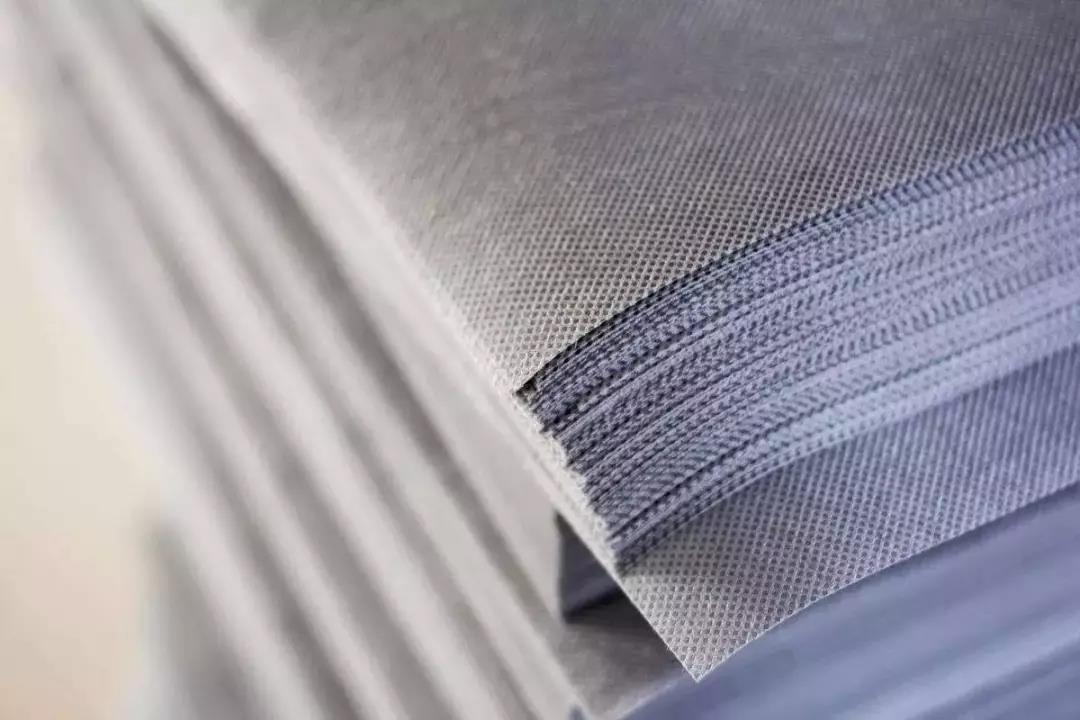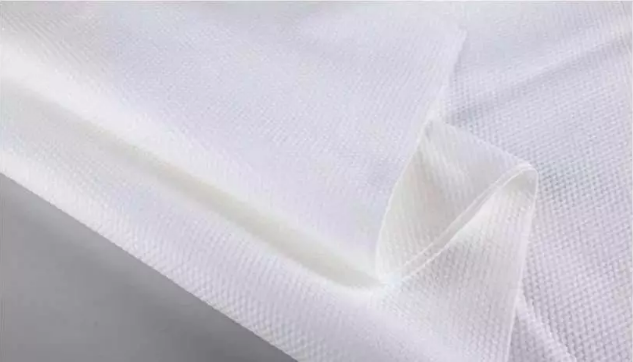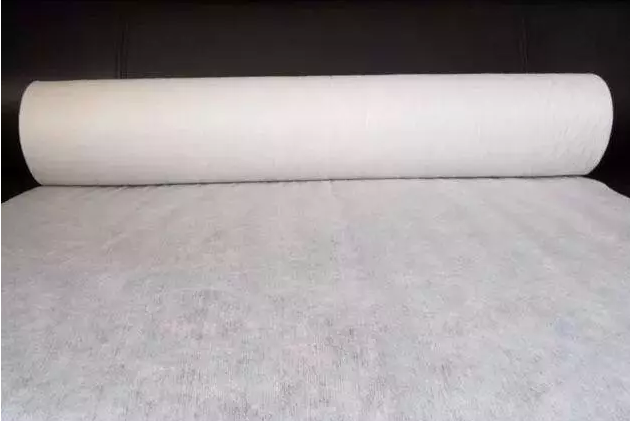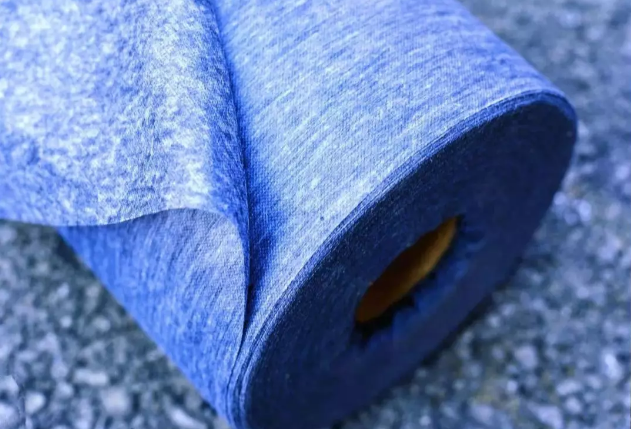
In the history of human civilization, the birth of a major new material has meant a change in productivity. Take a look at the enormous and far-reaching impact that new nonwoven materials have had on human daily life and on the fields of application related to "going to heaven and earth" in the 50 or 60 years since they were introduced!
Raw material
Nonwoven fabric (English name: Non Woven Fabric or Nonwoven cloth), also known as non-woven cloth, is composed of oriented or random fibers, forming a fiber network structure, and then reinforced by mechanical, thermal or chemical methods. The main fibers used in the production of nonwoven fabrics are polypropylene (PP) and polyester (PET). In addition, there are nylon (PA), viscose fibers, polyacrylonitrile fibers, acetonitrile (HDPE), and chlorine (PVC).
Advantages

Lightweight, mainly made of polypropylene resin, with a specific gravity of 0.9, only three-fifths of cotton, with a loose, good feel.
Soft, composed of fine fibers (2-3D), lightly fused and bonded. The finished product is moderately soft, with a comfortable feeling
Water repellent, breathable, polypropylene slices do not absorb water, water content is zero, the finished product has good water repellence, composed of 100% fibers with porous, breathable, easy to keep the cloth surface dry, easy to clean.
Non-toxic, non-stimulating, the product adopts the raw material production in line with FDA food grade, does not contain other chemical ingredients, stable performance, non-toxic, no odor, does not stimulate the skin.
Bacteria, chemical resistance, polypropylene is a chemically blunt material, not insects, and can isolate the presence of bacteria and insects within the liquid erosion; anti-bacteria, alkali corrosion, finished products do not affect the strength due to erosion.
The strength of the product is better than that of general staple fiber products, and the strength is non-directional and similar in both longitudinal and transverse directions.
Environmental protection, in terms of environmental protection, the raw material of most of the non-woven fabrics used is polypropylene, while the raw material of plastic bags is polyethylene, the two substances are similar in name, but in the chemical structure is very different. Polyethylene's chemical molecular structure has a fairly strong stability, extremely difficult to degrade, so plastic bags need 300 years to decompose;.
While the chemical structure of polypropylene is not strong, the molecular chain is simple to break, so that it can be effectively degraded, and in a non-toxic form into the next step of the environmental cycle, a non-woven shopping bags in 90 days can be completely decomposed. And non-woven shopping bags can be reused more than 10 times, and the degree of environmental pollution after disposal is only 10% of plastic bags.
Disadvantages
Compared with fabric, it is less strong and durable, and cannot be washed like other fabrics. Fibers are arranged in a certain direction, so it is easy to split from the right angle direction, etc. Therefore, the improvement of the production method is mainly focused on the improvement of the prevention of splitting.
Weaving process

Hydroentanglement is a process in which a high-pressure, micro-fine water jet is sprayed onto one or more layers of fibers to entangle them with each other, thus reinforcing the web and providing it with definite strength.
Thermal bonding, thermal bonding nonwoven refers to the addition of fibrous or powdered hot melt bonding reinforcing material to the fiber web, which is then heated and melted and cooled to form the cloth.
Pulp airflow into the network, airflow into the network of non-woven fabrics can also be called dust-free paper, dry paper non-woven. It is the adoption of airflow forming technology to open the wood pulp fiber board into a single fiber state, and then use the airflow method to make the fibers agglomerate on the web curtain, and then the fiber web is reinforced into cloth.
Wet method, wet nonwoven fabric is placed in the aqueous medium to open the fiber raw materials into a single fiber, while making different fiber raw materials mixed to make fiber suspension pulp, suspension pulp transported to the web-forming mechanism, fiber in the wet state into a web and then reinforced into cloth.
Spunbond, spunbond nonwoven is formed after the polymer has been extruded and stretched to form a continuous filament, the filament is laid into a web, and the web is then bonded by itself, thermally bonded, chemically bonded or mechanically reinforced to make the web into a nonwoven fabric.
Applications
Nonwoven products are internationally recognized as environmentally friendly products that care for the ecology of the earth. They are suitable for agricultural films, shoes, leather, mattresses, quilts, decoration, chemicals, printing, automobiles, building materials, furniture, etc. They are widely used and economical.
Nonwoven fabrics are made from chemical and plant fibers under the condition of water or air as suspension medium on wet or dry paper copying machine, although it is cloth without fabric, so it is called nonwoven fabric. Nonwoven fabric is a new generation of environmentally friendly materials, with the advantages of good strength, breathable and water-repellent, environmental protection, flexibility, non-toxic and tasteless, and cheap price. The material if placed outdoors by natural decomposition, its long life is only 90 days, placed indoors in 8 years decomposition, burning non-toxic, harmless, thus not polluting the environment, so environmental protection from this.

Medical and sanitary nonwoven fabrics: surgical gowns, protective clothing, disinfection wraps, masks, diapers, civilian wipes, wiping cloths, wet face towels, magic towels, soft towel rolls, beauty products, sanitary napkins, sanitary pads, and disposable sanitary cloths, etc.
Non-woven fabrics for home decoration: wall coverings, tablecloths, bed sheets, bedspreads, etc.
Workwear nonwoven fabrics: lining, bonding lining, flocking, shaping cotton, various synthetic leather base cloth, etc.
Nonwoven fabrics for industrial use: substrates for roofing water-repellent rolls and asphalt shingles, reinforcing materials, throwing finished materials, filtering materials, insulating materials, cement packaging bags, geotextiles, wrapping fabrics, etc.
Nonwoven fabric for agriculture: crop care cloth, rice planting cloth, irrigation cloth, heat preservation curtain, etc.
Workwear shoe nonwoven fabric: workwear lining, wadding, toe hard lining, heel lining, underwear, artificial deerskin, synthetic leather, warm shoe lining, cloth sole lining, space cotton.
Automotive industry nonwoven fabrics: waste spinning insulation heat felt, anti-vibration felt, headliner, cushion liner, carpet, door liner, car filter core, molding cushion.
Civil engineering, construction: reinforcement, reinforcement, filtration, linoleum backing, drainage board, roofing water barrier material, railroad, highway, berm, water slope, harbor sound insulation, sewer, heat prevention, respectively, drainage.
Other uses: machine heat-resistant tiles, map cloth, calendar cloth, artificial cloth, oil painting cloth, etc.
Contact: Jeanne yang(MISS)
Phone: 13912652341
E-mail: [email protected]
Add: Room A2216/A2217,Double-Star Building,No 567 New South Middle Road, KunShan City JiangSu Province ,China.